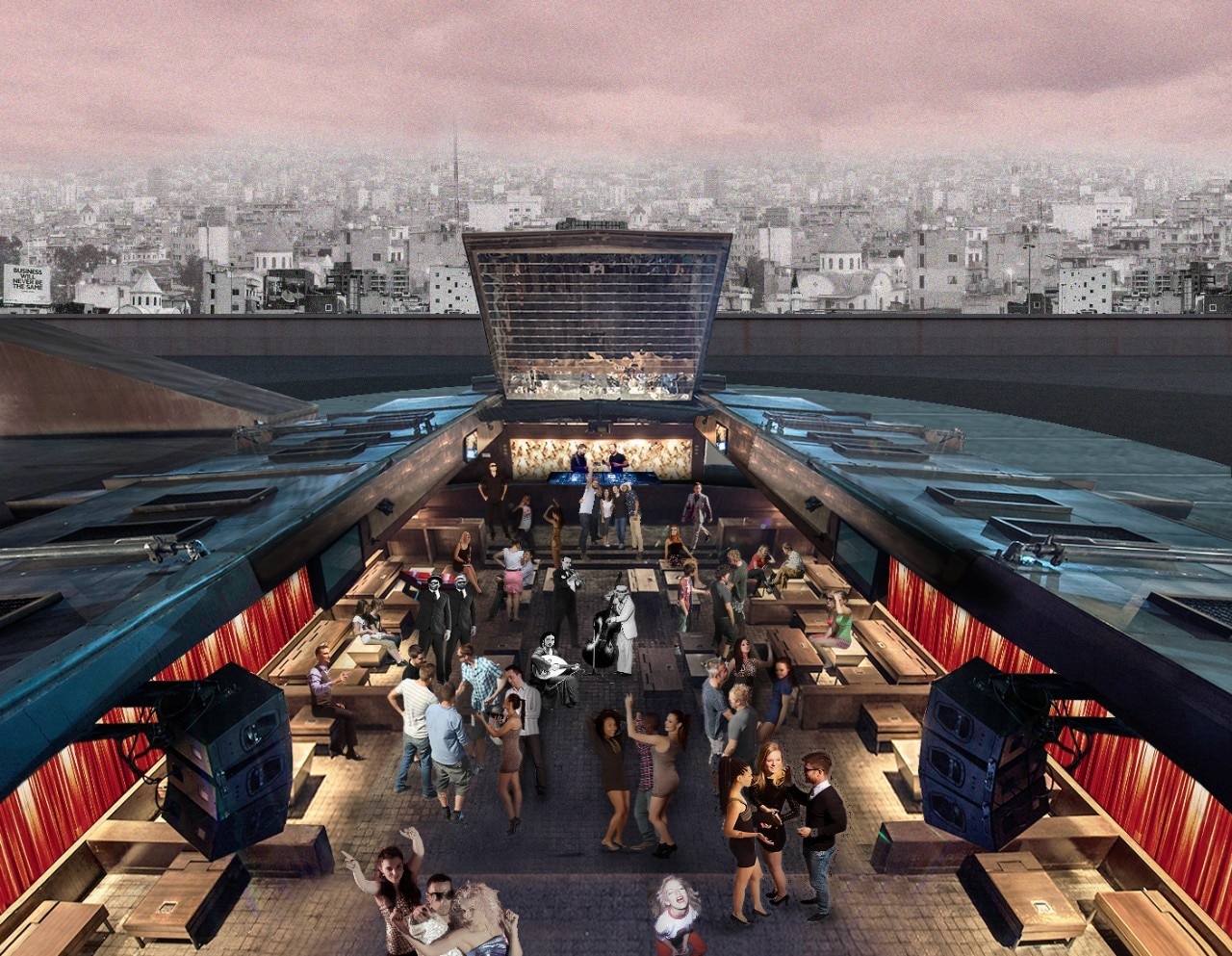Discos have always been the environment for the ephemeral pursuit of hedonism. The escapism to the dominant culture they offered, however, often came hand in hand with the trigger for profound social changes.
The ever-increasing revaluation of the cultural value of the discotheque, especially in terms of their architecture and design, has now broadened to the academic world.
The theme was in fact the focus of “Discorivoluzione”, a research project by 50 students of the Interior Design Laboratory at the Milan Polytechnic, which recently culminated in an exhibition in collaboration with the historical milanese music and culture events promoter Le Cannibale at PAC in Milan on the occasion of MuseoCity.

“I like to think of discos as territories of negotiation of rights,” explains Davide Fabio Colaci, lecturer in architecture and coordinator of the exhibition.
The negotiation Colaci is talking about seems to be summed up by Andy Warhol who, in reference to Studio 54 of which he was an avid visitor with his camera, said “The key of the success of Studio 54 is that it's a dictatorship at the door and a democracy on the dance floor.”
The tension of generational challenges give birth to – as Leonardo Savioli theorised as early as 1966 in his course at the University of Florence – “spaces of involvement”, which unwind through visual arts, design seats (such as the Gufram ones for the Piper Club in Turin and the Altro Mondo in Rimini, both projects by Pietro Derossi and Giorgio Ceretti) and the search for synaesthesia that go beyond the individual, reaching the political sphere.

It was, once again, Andy Warhol who emphasised the discotheque as a ring on which the dynamics of the present are at fight. The poster designed to promote the September 1985 afterparty at the New York Palladium of his and Basquiat's joint exhibition at the Tony Shafrazi Gallery in fact echoed those of boxing matches.
The disco, thus, emerges as the ecosystem of change. That is to say, as the privileged reality in which the zeitgeist is embodied across ever-changing spatio-temporal scenarios. And yet it is not, as one might think, only the interiors or the records played that define cultural transitions. The discourses triggered by the socio-political dynamics of the broader territorial context colliding with details of the outfits displayed on the dance floor, the graphic identity of the flyers, and the lyrics of the songs are pivotal elements at play.
The discotheque can also become an outpost of resistance for political and sexual rights, like in the case of Paradise's Garage, a shelter and a platform of free expression for the Hispanic and Afro-American homosexual community in late-1970s New York. Or even a springboard for escapism where the social contract is experiencing turmoil, as happened with Disco 2000, the club designed in 1980 in Beirut by Ettore Sottsass Jr. with a dancefloor reminiscent of airport runways. Here, the Lebanese population could feel like they were in Paris, drinking champagne despite the tumultuous circumstances of the civil war that broke out in 1975, noted Sottsass, who was never paid for the project by the venue owners.
In other cases escapism takes place in the form of catharsis, which the discotheque by becoming now a temple (Tresor, Berlin), then a supermarket of hedonism and drugs (Haçienda, Manchester). Or again, a performative environment, such as Cerebrum in New York, which between 1968 and 1969 laid the foundations for the Living Theatre and the Happenings of artists such as Allan Kaprow.
“The world of discos is ephemeral. Suffice it to say that the archetypal discotheque, Studio 54, was open for two years only,” comments Colaci in reference to the transitory changes brought by the 18 clubs examined in the project.

Transience is the fil rouge with the present. As Marco Greco, co-founder of Le Cannibale with Albert Hofer, observes, “Today there is a tendency to no longer identify the walls of the club, but the metaphorical walls of organisations as community reference points.”
The dynamics of music consumption have changed substantially, especially in the post-Covid era, but according to Le Cannibale the clubbing space remains a stage where social issues and battles – such as those of gender or sustainability – can be developed first and naturally, and which will then end up involving the wider public debate.
It is therefore no coincidence that the synergy between the realm of clubbing and that of museums occupies an increasingly prominent role today. As Hofer emphasises, “Discorivoluzione was the most radical partnership that was able to push beyond our natural boundaries in years of cultural activities promoted on the territory of Milan”.

- Opening image:
- Mural by Keith Haring in the Palladium, New York, 1985. Photo: ©Timothy Hursley, Garvey Simon Gallery.

Franke presents “The House of Well-Living” at Fuorisalone
With a multi-sensory installation, Franke will welcome visitors to its flagship store during Milan Design Week and present the year's new products.










